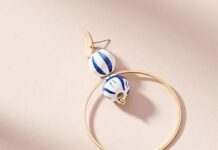When you think of high end luxury jewelry there are several brand names that come to mind. Cartier, Harry Winston, Martin Katz and of course Tiffany & Co. The 136 year old jewelry store is known best for its New York location on Fifth Avenue. Their flagship store boasts an impressive 128.54 carat yellow diamond known as the Tiffany Diamond, which they proudly display most days. The store and name, Tiffany’s has appeared in many different movies and songs and is especially well known for its role along side Audry Hepburn in none other than “Breakfast at Tiffany’s”. With over 60 stores located in the United States and over a 100 stores open internationally, Tiffany & Co. continues to be a power in the high end jewelry market. Surprisingly, Tiffany’s, which was founded by Charles Lewis Tiffany and Teddy Young did not start as a high end jewelry store. Charles and Teddy began their humble venture as, mainly, a stationary retailer. However after sixteen years of operation, in 1853 Charles Tiffany took over the store and made history by changing the name from Tiffany, Young and Ellis, to just Tiffany & Co. With his brand in place, Charles turned his focus to fine jewelry.
Soon Tiffany & Co. would be known for its expertise in silverware and jewelry. Tiffany received patronage from many of the great family of New York in the late 1800’s. The Astors, and the Vanderbilts, as well as the Morgans made Tiffany & Co. a part of their luxurious lifestyle. In 1845 Tiffany’s create a catalogue, which they appropriately named “The Blue Book” providing their patrons an easier way to browse their fine jewelry and silverware. Agian in, 1877 Tiffany’s made history by creating med with an NY insignia on it to honor the first New York City police officer who was shot and killed in line of duty. We now see this insignia every were today because it was adopted in 1909, over 30 years after its first use, by the New York Yankees. Tiffany’s popularity continued to grow and was commissioned in 1885 to redesign the Great Seal of the United States. Then in 1929 the great depression struck. The first things people began to give up were the little luxuries that were costly and unnecessary. Furs, silver, jewels and other luxury items were sold as the depression continued to worsen. Many stores were unable to stay open, large companies closed their doors forever, to became part of the memories of a pre-depression era economy. Tiffany’s pushed through and continued to operate throughout the depression. The demand for Tiffany’s resumed and the company continued to increase their brand value. Then in 1968 Tiffany’s was commissioned to design china service for the White House. Among its other well known attributes, Tiffany’s is know for its trademark color, Tiffany Blue. This color is trademarked by the company and is a custom color created by Patone specifically for Tiffany & Co. Since 1853 the company has grown.
The demand for Tiffany products is high, but it is not just the name that people are looking for. Tiffany’s has continued to create designs that make their jewelry uniquely recognizable. The demand for jewelry designed to look like Tiffany’s is high as well. Tiffany’s took issue with this in 2004 during the rise of eBay, when it came to light that both individuals and eBay were profiting from sales of bootleg and illegal replicas of Tiffany designs. Tiffany sued eBay and although the case has not gone to trial Tiffany’s refusal to allow counterfeit pieces to be sold under their name pushed companies such as eBay to take a stand against bootleg luxury products. Although the economy has taken a downturn in recent months Tiffany & Co. is pressing forward and is continuing to open new stores around the world. As a company it has made an excellent market for itself, continuing to grow its customer base and creating new and singular designs. Tiffany’s has made a point to maintaining the integrity of their product with both recreation and innovation they have been able to retain an accomplished and upstanding reputation. As the company continues to flourish and expand, and today it remains a name synonymous with luxury, wealth and taste.










































